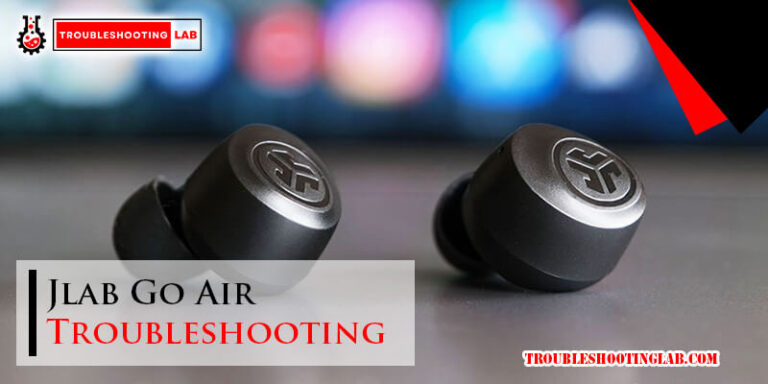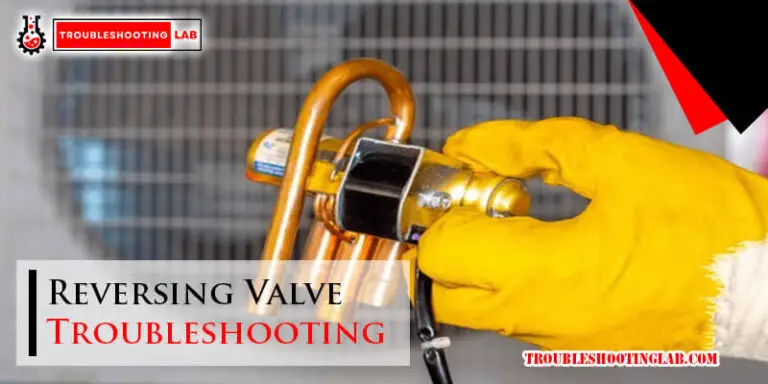Aquacal Heat Pump Troubleshooting: Expert Tips for Quick Fixes
For Aquacal heat pump troubleshooting, check the power supply and filters. Ensure that the unit is receiving proper power and the filters are clean and not clogged.
Clean filters and correct power issues as necessary to resolve common heat pump problems. Welcome to the world of Aquacal heat pump troubleshooting! If you are experiencing issues with your heat pump, it’s essential to understand the common problems and their solutions.
Proper maintenance and troubleshooting can help you keep your heat pump running efficiently and effectively. In this guide, we will explore the common troubleshooting steps for Aquacal heat pumps, helping you identify and resolve issues quickly and easily. Whether it’s a power supply problem or a simple filter issue, we have you covered with practical tips and solutions to keep your Aquacal heat pump running smoothly. Let’s dive in and learn how to troubleshoot your heat pump effectively.

Common Aquacal Heat Pump Issues
When it comes to your Aquacal heat pump, it’s important to be aware of common issues that may arise to ensure your system runs smoothly. Let’s take a closer look at some typical problems that you may encounter with your Aquacal heat pump.
If you find that your Aquacal heat pump is not receiving power, there are a few potential causes to consider. First, check the power supply and ensure that the unit is properly plugged in. Additionally, inspect the circuit breaker to see if it has tripped. Addressing these issues can often resolve power supply problems and get your heat pump running again.
If your Aquacal heat pump is not heating your pool water effectively, several factors could be at play. Start by checking the heat pump’s air filter to see if it’s clogged or dirty, as this can impede heating performance. Additionally, assess the water flow rate and ensure that it meets the manufacturer’s specifications. Addressing these issues can often improve the overall heating performance of your Aquacal heat pump.
No Power Supply
If your Aquacal heat pump is not turning on, it could be due to a lack of power supply. This issue can be frustrating, but there are steps you can take to troubleshoot and resolve the problem. Here, we will discuss how to check the power source connection and inspect the circuit breaker to ensure your Aquacal heat pump receives the power it needs to function properly.
Check Power Source Connection
The first step in troubleshooting a no power supply issue is to check the power source connection. Ensure that the heat pump is properly connected to a power source. This can be done by examining the power cord and outlet for any visible damage or loose connections.
- Inspect the power cord for any fraying or exposed wires.
- Check that the power cord is securely plugged into the outlet.
- Consider trying a different outlet to rule out any issues with the current power source.
Inspect Circuit Breaker
Another potential culprit for a lack of power supply is a tripped circuit breaker. To address this issue, inspect the circuit breaker associated with the heat pump to ensure it has not been tripped.
- Locate the circuit breaker panel in your home.
- Identify the circuit breaker that corresponds to the Aquacal heat pump.
- If the circuit breaker is in the “off” position, switch it to the “on” position.
Poor Heating Performance
If your Aquacal heat pump is struggling to provide adequate heating, several factors may be attributing to this issue. Let’s explore some common troubleshooting steps to address poor heating performance.
Check Thermostat Settings
Ensure that the thermostat settings on your Aquacal heat pump are configured correctly to the desired temperature.
Inspect Filter For Clogs
Regularly check the filter on your heat pump for any clogs or debris that may be obstructing proper airflow.
Unusual Noises
If you have noticed any unusual noises coming from your Aquacal heat pump, it is important to address them as soon as possible. Ignoring odd sounds can lead to bigger problems down the line and potentially costly repairs. In this section, we will discuss how to identify different types of noises and provide troubleshooting tips to resolve them.
Identify Noise Type
The first step in troubleshooting unusual noises is to identify the type of noise you are hearing. Here are some common noises and their possible causes:
- Clicking noise – This noise can indicate a faulty relay or control board.
- Squealing or screeching noise – This noise might be due to a worn-out fan belt or motor bearings.
- Banging or clanging noise – A loose or broken component, such as a fan blade or bracket, can cause this sound.
- Gurgling or bubbling noise – This noise is often caused by air trapped in the system or low refrigerant levels.
Inspect Fan And Motor
Once you have identified the type of noise, it is essential to inspect the fan and motor for any issues. Here’s how:
- Turn off the heat pump and ensure it is disconnected from the power source before proceeding.
- Visually inspect the fan blades for any damage, such as cracks or bends. If you notice any issues, replace the fan blades as necessary.
- Check the fan motor for any signs of wear or overheating. Look for burnt wires, excessive vibration, or an unusual smell. If you suspect a problem, contact a professional technician for further assistance.
Regular maintenance, including keeping the fan and motor clean and lubricated, can help prevent unusual noises from occurring. It is also important to refer to the manufacturer’s guidelines for specific maintenance requirements.
By identifying the type of noise and inspecting the fan and motor, you can troubleshoot and address any issues with your Aquacal heat pump. Regular maintenance and prompt attention to unusual noises will help keep your heat pump functioning efficiently and extend its lifespan.
Faulty Temperature Readings
One of the most common issues you may encounter with your Aquacal heat pump is faulty temperature readings. Inaccurate temperature readings can lead to inefficiencies in the system and potentially affect the comfort of your swimming pool or spa. Fortunately, there are a few simple troubleshooting steps you can take to address this problem.
Calibrate Thermometer
Before delving into more complex solutions, it’s important to check the accuracy of your thermometer. Start by calibrating it to ensure precise temperature measurements. Follow these steps:
- Fill a cup with crushed ice and a small amount of water, ensuring the ice is evenly distributed.
- Submerge the sensor of your thermometer into the cup, making sure it doesn’t touch the sides or bottom.
- Wait for a few minutes until the reading stabilizes.
- Compare the displayed temperature with the known freezing point of water (0°C or 32°F).
- If the reading deviates significantly, use the calibration feature on your thermometer, if available, to adjust it accordingly.
By calibrating your thermometer, you can ensure that the temperature readings provided by your Aquacal heat pump are accurate.
Inspect Sensor Placement
Another potential cause of faulty temperature readings is improper sensor placement. It’s essential to ensure that the sensor is positioned correctly to obtain accurate measurements. Consider the following points:
- Check if the sensor is fully immersed in the water. If it’s not, it may be reading the temperature of the surrounding air instead.
- Verify that the sensor is placed away from jets, returns, or any other sources of water disturbance, as they can affect the temperature reading.
- Make sure the sensor is clean and free from any obstructions, such as debris or algae. A dirty sensor can interfere with its ability to accurately measure the water temperature.
By inspecting and adjusting the placement of the sensor, you can improve the accuracy of temperature readings provided by your Aquacal heat pump.
Leaking Water
Water leaking from your Aquacal heat pump can be a common issue that needs prompt attention and troubleshooting.
Locate Leak Source
First step is to identify the exact location of the leak on your Aquacal heat pump.
Check Seals And Connections
Inspect the seals and connections for any damages or loose fittings that could be causing the water leak.
Ice Build-up
Ice build-up can cause problems in Aquacal heat pumps. Troubleshooting this issue is important to ensure optimal performance and prevent damage to the pump. Look for solutions to tackle ice build-up and maintain efficient heat pump operation.
Ice build-up in your Aquacal heat pump can be a common issue that affects the system’s performance. Check Airflow Restrictions A common cause of ice build-up is restricted airflow, which can be caused by blocked vents or debris in the air intake. Ensure that there are no obstructions around the unit and that air can flow freely. Additionally, check the air filters and clean or replace them if they are dirty. Defrost Unit if Necessary If ice has already accumulated on the unit, it’s essential to defrost it to prevent damage. This can be done by turning off the heat pump and allowing the ice to melt naturally, or using a gentle heat source to speed up the process. Be careful not to use excessive heat to avoid damaging the unit. Regular maintenance and checking for ice build-up can help ensure optimal performance of your Aquacal heat pump.
Professional Assistance
When it comes to troubleshooting your Aquacal heat pump, sometimes you may encounter issues that require professional assistance. While regular maintenance and basic troubleshooting can solve many problems, there are instances where calling a qualified technician is the best course of action.
When To Call A Technician
There are certain situations that warrant the expertise of a professional technician. If you are unable to identify or fix the problem on your own, it’s time to seek professional help. Additionally, if you notice any signs of major system malfunction, such as strange noises, leaks, or inconsistent heating, it’s crucial to contact a technician immediately.
Maintenance Tips
Maintaining your Aquacal heat pump is essential to prevent frequent breakdowns. Regularly cleaning the filters, checking for debris around the unit, and ensuring proper airflow can help maintain the efficiency of your heat pump. It’s also advisable to schedule routine professional maintenance to ensure the optimal performance of your system.
Frequently Asked Questions Of Aquacal Heat Pump Troubleshooting
How Do I Troubleshoot A Leaking Aquacal Heat Pump?
To troubleshoot a leaking Aquacal heat pump, first turn off the power supply. Check the connections and fittings for any leaks or loose connections. Look for any cracks in the pump casing or damage to the seals. If you find a leak, repair or replace the damaged part.
Finally, check the water chemistry to ensure it is balanced, as imbalanced water can lead to corrosion and leaks.
Why Is My Aquacal Heat Pump Not Heating The Pool?
If your Aquacal heat pump is not heating the pool, check the thermostat settings to make sure they are at the desired temperature. Ensure that the water flow is adequate and that the pump is running smoothly. Additionally, check the heat exchanger for any debris or scaling that may be hindering the heat transfer process.
If all else fails, it may be time to consult a professional for further troubleshooting.
What Should I Do If My Aquacal Heat Pump Is Making Strange Noises?
If your Aquacal heat pump is making strange noises, first check for any loose or vibrating parts. Tighten any screws or bolts that may be causing the noise. Inspect the fan blades for any damage or debris that may be causing the noise.
If the noise persists, it is best to contact a professional technician who specializes in heat pump repairs to diagnose and resolve the issue.
How Often Should I Clean The Air Filters Of My Aquacal Heat Pump?
It is recommended to clean the air filters of your Aquacal heat pump at least once every three months. However, if you live in a dusty or high-pollen area, more frequent cleanings may be necessary. Clean air filters ensure optimal airflow and prevent debris from clogging the system, allowing the heat pump to operate efficiently.
Conclusion
When experiencing issues with your Aquacal heat pump, follow these troubleshooting tips for a smooth operation. Regular maintenance is key to preventing common problems. Stay informed and address issues promptly to avoid costly repairs. With proper care, your heat pump will provide reliable heating for years to come.






